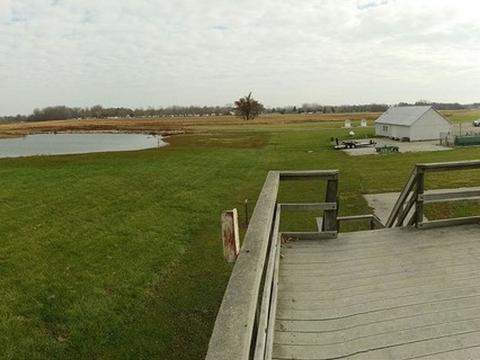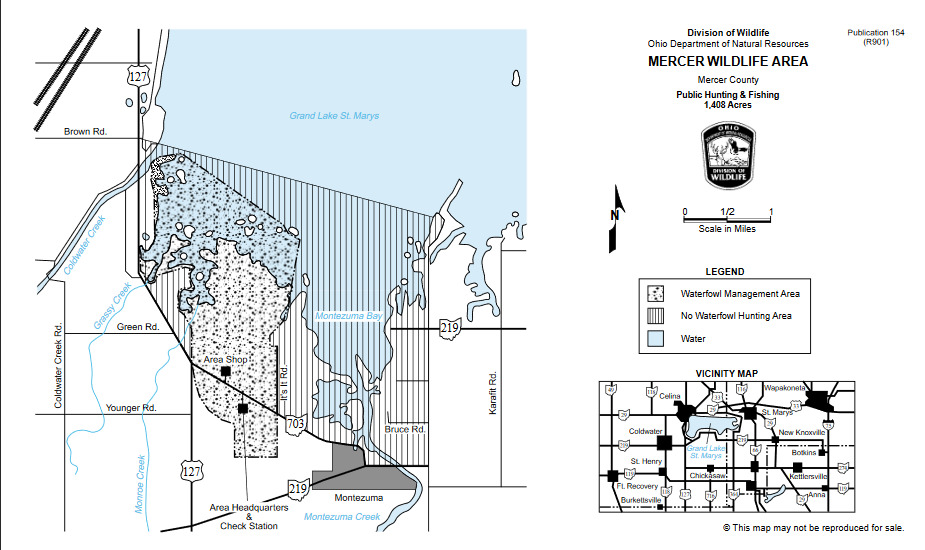Mercer Wildlife Area

Mercer Wildlife Area
Celina, Ohio 45822
Official WebsiteMercer Wildlife Area map
Also, see all the hotspots at:
St Marys River-Grand Lake Important Bird Area
Mercer County Birding Drive
Tips for Birding
Grand Lake Saint Marys State Park has locations nearby.
About this Location
This 1,408-acre wildlife area lies in the grain farming country of west central Ohio, three miles south of Celina. It is bounded by US-127 on the west and It’s It Township Road on the east; it extends approximately one-half mile south of OH-703.
Mercer Wildlife Area is quite flat on the north side of the area bordering Grand Lake Saint Marys. It is more rolling south of OH-703. Approximately one-fourth of the wildlife area is in cropland and meadow. There are seven ponds (not shown on the map) totaling more than seven acres; the shallow bays of Grand Lake Saint Marys make up the remainder of the area. Approximately 1,050 acres of water in the southwest corner of the 13,500-acre Lake Saint Marys are managed for waterfowl through a cooperative agreement with the Division of Parks and Recreation.
Mercer Wildlife Area is situated on the lake built as a water supply for the Miami-Erie Canal. Acquisition and construction of the lake took place from 1837 to 1845. Lake Saint Marys has contributed to hunter’s pleasure for over a century by attracting large numbers of ducks and geese. The Canada goose was a prized bird in early times, as well as today. Old timers hunted geese chiefly on the lake, where snags and stumps provided natural blinds. Few of them recall hunting in crop fields, the most popular method now.
The rapid increase in human population and the development of the lake for recreational uses have imposed many restrictions on the wildlife community. The primary purpose of the wildlife area is to act as a refuge, providing resting and feeding areas for local and migrant wildlife. The waterfowl management area provides the largest and one of the few remaining areas around the lake that is free from human disturbance.
The Canada goose management program began in 1956. Nesting and migrant goose populations have increased steadily since that time. Wildlife management activities have included development and management of grain crops and meadows, primarily for nesting and migrant waterfowl. Trees and shrubs have been maintained along the lakeshore to prevent erosion. Seven ponds have been constructed on the area to increase nesting sites and area utilization by waterfowl.
Waterfowl production has been enhanced by the use of several hundred wood duck nest boxes and Canada goose nesting structures on the management area and in shallow waters around Lake Saint Marys.
Features
Restrooms on site
Wheelchair accessible trail
Entrance fee
Roadside viewing
Content from Official Website
Last updated February 17, 2023
